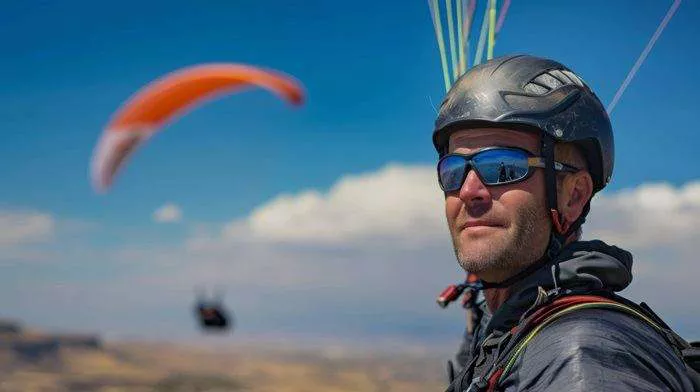Paragliding is an exhilarating sport that combines the thrill of flight with the serenity of gliding through the skies. One of the most critical components of this experience is the paraglider wing, a marvel of engineering that allows pilots to soar gracefully. However, like all equipment, a paraglider wing has a finite lifespan. Understanding how long a paraglider wing lasts and what factors influence its longevity is essential for safety and performance.
Understanding Paraglider Wing Construction
Materials Used in Paraglider Wings
Paraglider wings are constructed using advanced materials designed to be lightweight yet durable. The primary materials include:
Ripstop Nylon: Known for its strength and resistance to tearing, ripstop nylon is a common choice for the canopy.
Mylar: Used in areas requiring extra rigidity, such as the leading edge of the wing.
Lines: Typically made from Dyneema or Kevlar, these materials offer high tensile strength and minimal stretch.
Design and Engineering
The design of a paraglider wing involves careful engineering to balance performance, safety, and durability. Factors such as aspect ratio, cell count, and internal structure play significant roles in the wing’s behavior and lifespan.
Factors Influencing the Lifespan of a Paraglider Wing
Flight Hours
The most straightforward measure of a paraglider wing’s lifespan is the number of flight hours. On average, a well-maintained wing can last between 300 to 500 hours of flight. However, this range can vary significantly based on several factors.
UV Exposure
Ultraviolet (UV) radiation from the sun is one of the most detrimental factors affecting paraglider wings. Prolonged exposure to UV rays can weaken the fabric and reduce its tensile strength, leading to a shorter lifespan. Pilots should minimize direct sun exposure when the wing is not in use.
Handling and Storage
Proper handling and storage of a paraglider wing are crucial for its longevity. Rough handling, such as dragging the wing on rough surfaces or improper packing, can cause wear and tear. Additionally, storing the wing in a cool, dry place away from direct sunlight helps preserve the materials.
Environmental Conditions
The conditions in which you fly also impact the wing’s lifespan. Flying in harsh environments, such as coastal areas with saltwater exposure or dusty, abrasive terrains, can accelerate wear. Pilots should be mindful of these conditions and take appropriate measures to protect their equipment.
Frequency of Use
How often a wing is used also determines its lifespan. Frequent use, even if for short durations, can add up over time. Conversely, a wing that is used sparingly but stored improperly may not last as long as one used regularly but well-maintained.
Signs of Wear and When to Replace Your Wing
Visual Inspections
Regular visual inspections are vital for identifying signs of wear and tear. Look for the following indicators:
Fabric Wear: Check for thinning or faded areas on the canopy.
Stitching: Inspect the seams for loose or broken stitches.
Lines: Ensure that the lines are not frayed or damaged.
Performance Changes
Changes in performance can also signal that a wing is nearing the end of its lifespan. If the wing feels less responsive, exhibits unusual behavior, or has difficulty maintaining stable flight, it may be time for a replacement.
Professional Inspections
In addition to self-inspections, periodic professional inspections are recommended. Certified technicians can perform thorough checks and tests, such as porosity measurements and line strength tests, to assess the wing’s condition accurately.
Extending the Lifespan of Your Paraglider Wing
Proper Storage
Storing your paraglider wing correctly can significantly extend its lifespan. Use a dedicated storage bag and keep the wing in a cool, dry place. Avoid storing it in hot or humid environments, as these conditions can degrade the materials.
Careful Handling
Handle your wing with care during setup, flight, and packing. Avoid dragging it on the ground and be gentle when packing it away. Using a concertina bag can help maintain the wing’s shape and reduce stress on the materials.
UV Protection
Whenever possible, minimize UV exposure by keeping the wing shaded when not in use. Using a wing cover can provide additional protection from the sun’s harmful rays.
Regular Maintenance
Perform regular maintenance tasks, such as cleaning the wing and checking for damage. Addressing minor issues promptly can prevent them from becoming major problems.
The Role of Technology in Enhancing Wing Durability
Advanced Materials
Advancements in material science have led to the development of more durable and lightweight fabrics. Innovations such as silicon-coated nylon and high-performance Dyneema lines have improved the lifespan of modern paraglider wings.
Improved Design Techniques
Modern design techniques, including computer-aided design (CAD) and fluid dynamics simulations, allow manufacturers to create wings with enhanced performance and durability. These advancements contribute to longer-lasting wings that can withstand the rigors of flight.
Quality Control
Stringent quality control measures during the manufacturing process ensure that each wing meets high standards of durability and performance. This includes thorough testing of materials and finished products to detect any potential weaknesses.
see also: What Is The Risk Of Paragliding
Case Studies: Real-World Wing Longevity
Experienced Pilots
Experienced pilots who maintain their equipment meticulously often report longer lifespans for their wings. These pilots follow best practices for handling, storage, and maintenance, demonstrating that proper care can significantly extend a wing’s usable life.
Varied Flying Conditions
Case studies of pilots flying in diverse conditions reveal the impact of the environment on wing longevity. Pilots flying in harsh conditions may need to replace their wings more frequently, while those in milder environments enjoy extended use.
Conclusion
Understanding how long a paraglider wing lasts involves considering various factors, from flight hours and UV exposure to handling and storage practices. By taking proactive steps to care for and maintain their wings, pilots can maximize the lifespan of their equipment, ensuring safe and enjoyable flights for years to come. Whether you’re a seasoned pilot or a newcomer to the sport, prioritizing the care of your paraglider wing is essential for a successful and fulfilling paragliding experience.
related topics:

